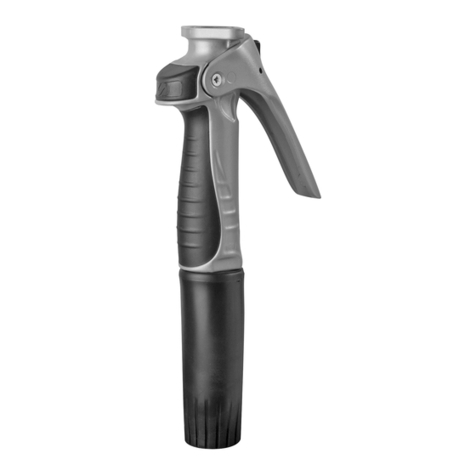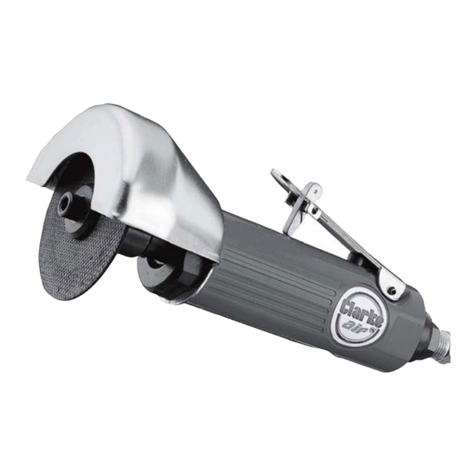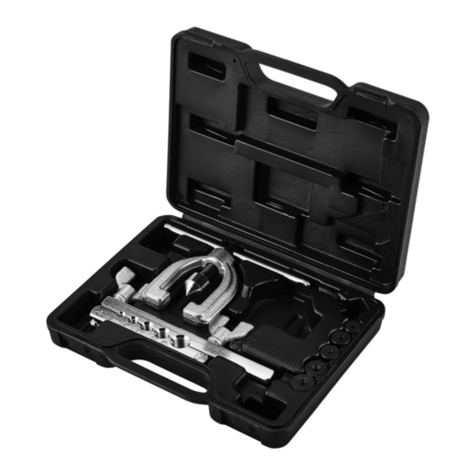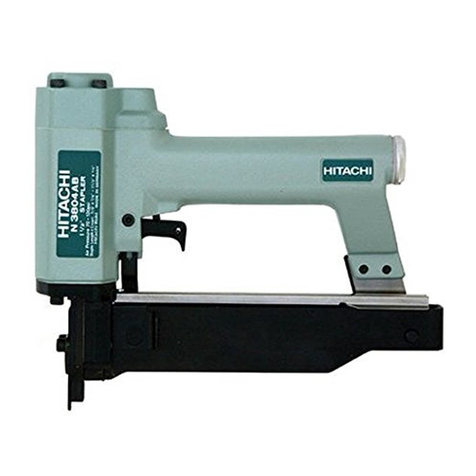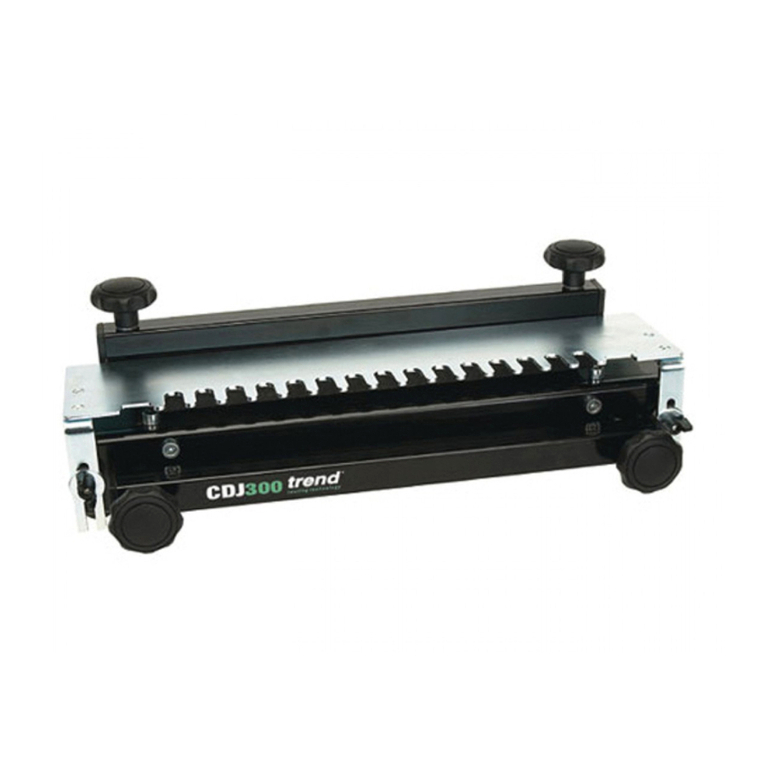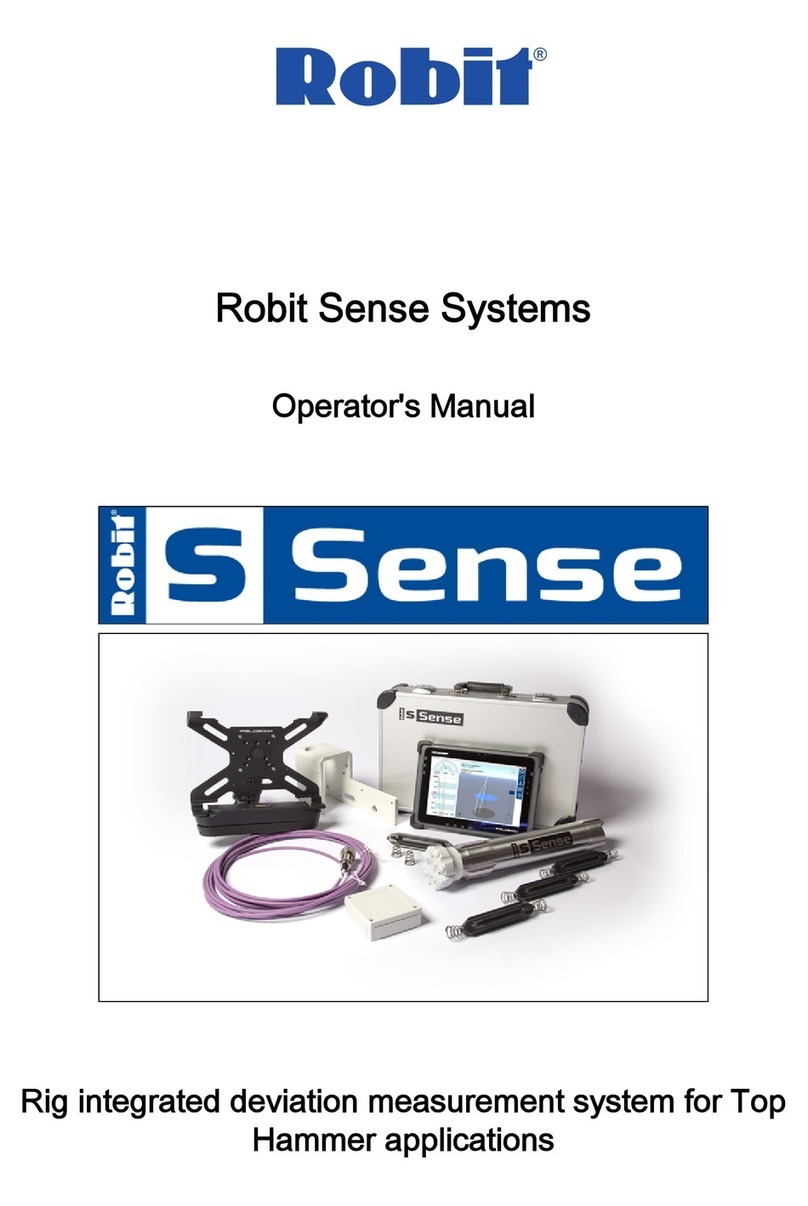DFC NSV-400 Installation instructions

OPERATION MANUAL
&
PRODUCT SPECIFICATIONS
FOR
NSV-400
AUTOMATIC
BANDING/SLEEVING MACHINE
DFC PACKAGING (SLEEVES) PTY. LTD.

3
I N T R O D U C T I O N
1.1 SERVICE SUPPORT
If you have any problem or queries regarding our Machinery, please feel free to contact our
department:
DFC Packaging Group of Companies
20 Summit Road, Noble Park 3174
Phone:
9701 2000
Facsimile Number:
(03) 9701 2022
1.2 GENERAL INFORMATION
This manual has been produced to provide operating and service instructions for the NSV –
400 Sleeving Shrink Sleeve Applicator.
The machine has been designed to feed, cut and apply film bands or sleeves onto product fed
via a conveyor at product rate of up to 250 per minute (Depending on the size and shape of
the product). After application the sleeve/band is wiped down on to the product prior to
entering a heat tunnel.
The products must be pitched before they reach the applicating driver and this can be
achieved by a pitching scroll, rotary drum or other form of pitching devices.
The required product pitch is dependent on the length of the sleeve/band and the longer the
sleeve length the greater the pitch required.
The sleeves/bands are retained on the shooting head (lower part of the mandrel), which is
feed automatically at the placement position.
The length of heat tunnel required to shrink the material tightly onto the product is
dependent on the length of the sleeve/band and the application.
The tunnel may be profiled, via air flow and temperature controls, to optimize the material
shrink.

4
1.3 BASIC BLUEPRINTS

5
1.4 GENERAL SPECIFICATION
1.4.1 OPERATION PRINCIPLES
NSV-400 is designed to sleeve or band round or certain non circular products.
Lay flat sleeving material is fed from a spool, situated at the side of the machine, across guide
rollers to the film sensor and into the cutting unit.
Rubber friction bands positioned on a servo motor controlled film slack driver, feed the
material on demand. The feed cycle is initiated by a photo electric switch. The photo electric
switch is activated by the applicating driver which ultimately delivers the cut sleeves/band
onto the product.
Before reaching the cutting unit, the flat tube of film is spread out by a mandrel.
The material must able to take sufficient stress and strain to ensure non-breakage while going
through a mandrel.
The cutting unit contains six sets of rotating blade to cut sleeves/bands.
Control of the feed length is via an impulse base system or by photo registration on printed
material.
The applicating driver, and hence the sleeving operation, is initiated by a photo electric switch
situated on the main unit.
1.4.2 GENERAL PARAMETERS
Product Rate
150-350pcs per min depending on container shape and size
Sleeve Size
Lay-flat Size: Min. 80mm to Max. 160mm or size as per your order in original specification
Height: Min. 50mm to Max. 200mm or size as per your order in original specification
Sleeve/Band Materials
To ensure efficient operation of the machine, the lay-flat material must meet the following
specification:
Flat Creases
If the material is flattened with too greater pressure, molecular damage occurs at the
creases on either side of the flat width. In extreme cases the material can split at the
crease, but in general terms this heavy creasing will prove detrimental to the machine
operation especially on heavier materials i.e. 0.05, 0.07 and 0.075 mm.
NSV-400 is designed to operate with material thickness of 0.035 ~ 0.075 mm.
Product Size
Product diameter –size as per your order in original specification
Product Height - 250mm maximum (based on 900mm conveyor height)
Product Pitch
Product must be supplied pitched to the placement head.

6
1.4.3 ADJUSTMENTS &SAMPLE LCD DISPLAYS
The adjustments can be made from the Touch Screen LCD control panel. When the LCD is on the
following will be shown on the screen:
Step 1:
Press ENGLISH LANGAGE to choose the type of the language to be used.
Step 2:
Press MANUAL ADJUST to set up the setting.

7
Step 3:
Press NEXT PAGE to set up the feed speed, guiding belt speed, scroll speed
and conveyor speed that you need. The following menu will be shown:
Step 4:
Press PREVIOUS PAGE return to manual adjust 1 and press PARAMETER
ADJUST to set up the setting.

8
Step 5:
To adjust parameters, press □, the following screen will appear:
7
.
7
8
CLR
9
4
5
6
ESC
2
3
0
-
7
ENT
DEL
4
1

9
15000
Feed Speed
The following menu will prompt
when ‘’ button is pressed
Press the necessary digits /
buttons, for example if
‘13000’ were pressed, it will
be displayed in the dashed
box (i.e.//////////)
Press ENT to enter the
number when finished.
Step 6:
Enter the password to set the setting.
Example:
To change ‘Feed Speed’ press ‘’ as shown:
Step 7:
Repeat above examples to all parameters settings if necessary.
Step 8:
Press MANUAL ADJUST to return to MANUAL ADJUST 1, and then press
AUTO MODE to go to AUTOMATIC MODE MENU; or press PARAMETER
ADJUST to go back to setup parameter again.
Step 9:
Press AUTO ON to start the machine.
1.4.4 FEED CUT HEAD
Material is fed by two rubber rollers driving against a set of bearings on the mandrel.
The roller is servo controlled. The standard method of controlling the material cut length is
via servo controller fitted to the drive roller axis. The signal from the encoder is monitored
by the cut length indicator/controller in the control enclosure. The controller is interfaced
with a P.L.C which discontinues the feed at the pre-selected feed length value.
An alternative method of feed length control is photo registration commonly used on printed
materials.
Maximum feed length –please refer to the original specification.
Material is cut to length by cutting unit, which contains 6 rotating blades.
7
.
7
8
CLR
9
4
5
6
ESC
2
3
0
-
7
ENT
DEL
4
1

10
Maximum cutting width –please refer to the original specification
Cut length repeatable accuracy
1mm.
Band/sleeve positional accuracy on product in the vertical plane 1mm prior to shrinking.
1.4.5 FULL SPOOL UNWIND
The Full Spool Unwind is controlled by a photo electric switch which via the programmable
logic controller, operates a A.C. motor driven feed controller which creates slack web to feed
the cutting head.
Full spool diameter –500mm maximum.
Core size –101mm, or as per specified in your order.
Lay-flat width –as per specified in your order.
1.4.6 OPTIONS
Conveyor Belt
Conveyor lengths of 5 meters.
Conveyor slat width of 100mm in either stainless steel or acetal.
Conveyor motor –½ HP Permanent Magnet A.C. as standard.
Conveyor speed can vary.
Conveyor must not be subject to extreme vibration.
Product Pitching
Product can be pitched, where required, by scrolls mounted on the conveyor.
Product Centralizing
Product can be centralized, where required, by a double belt centralizer unit mounted to the
conveyor.
The machine is not protected from build back of product from a subsequent machine.
A constant flow of product is needed. No undue pressure of product must be allowed to
affect the operation of the pitching/centralizer mechanisms.
Heat Tunnels
Shrinking is achieved by hot air, manifold through a series of outlets (nozzles) designed to
suit the product. Heat tunnels are constructed on adjustable frame work systems which fits
around the conveyor belt.
Maximum product diameter: 102mm
Maximum product height: 350mm.
Wipedown
Wipdedown for banding operations is normally achieved by a metal skid plate which pushes
the banding material down short distances securely onto the product.
Often for sleeving, wipedown is achieved by rotating brushes with soft rubber flails or bands.

11
1.4.7 SERVICE REQUIREMENTS
Main Machine
Voltage: 415 V A.C. (3 phase)
Frequency: 50/60 Hz
Current: 20 Amps
Heat Tunnel
Voltage: 415 V A.C. (3 phase)
Frequency: 50/60 Hz
Power: 20 Amps
1.4.8 ENVIRONMENTAL REQUIREMENTS
Ambient temperature: 10 ~ 35
C
Humidity: 20% ~ 80% non condensing.
1.4.9 DIMENSIONS
Main Machine
Length: 800 mm
Width: 750 mm
Height: 2200 mm
Weight: 200 kg
Requires 2 meter working space around the machine for operation and service
Conveyor Belt
Length: 5000 mm minimum (Varied by options)
Width: 101 mm
Height: 850 ~ 1000 mm
1.4.10 NSV-400 SLEEVER/BANDER BASIC ELECTRICAL SPECIFICATION
Main Power Supply
Voltage: 415 V A.C. (3 phase)
Current: 20 Amps
Frequency: 50/60 Hz
Control Circuits
Voltage: 24 V D.C. (including Touch Screen LCD displays)
Isolator & Transformers
One main supply inlet isolator, mounted externally on the framework.
The transformer steps down from 440V to 210V.

12
Motors
Normal Motor Voltage: 220V A.C. (3 phase)
Wiring
All wiring is to specification with regard to suitability and colour coding and is terminated with
numbered sleeves as recorded on the wiring diagram.

13
D E S C R I P T I O N A N D S E T U P
The description of the main units of the machine follows the film path from the material spool to
placement on the product, in logical sequence.
2.1 FULLSPOOL ASSEMBLY
The fullspool assembly consists of a stainless steel reservoir tray containing a freely rotating
spindle onto which the reel of material is loaded. The spool is unwound to supply the
machine by a motor driven roller and nip roller system. Material is supplied on demand once
a photo electric sensor is cleared an the drive is switched off after a timed period. See section
2.2.
To load a new reel of film, refer to the illustration which shows the material unwind full
spool assembly.
Located in the center of the outer spool disc is a quick-lock device which secures the disc to
the spool, this must be rotated anti-clockwise to enable removal of the disc. Place a new reel
of film on the unwind spool, making sure the cardboard core is located over the aluminum
disc center of the rear disc, and that the film unwinds in the direction shown. Replace the
outer disc and apply pressure to nip the reel of film between the two discs. Rotate the
camlock in a clockwise direction to secure the disc to the spool.
2.2 AUTOMATIC FILM FEED (FIG.1)
A Photoelectric switch mounted on the side of the material reservoir emits an infrared light
beam across the reservoir tray. This beam is bounced back to a receiver in the switch by a
reflector mounted on the opposite side of the tray.
If the beam is not broken i.e. the tray is empty, the P.L.C. will switch on the material unwind
driver motor to dispense film from the fullspool into the tray. When the film reaches the tray
and breaks the beam, film will continue to be dispensed for a further 5 seconds (if needed)
before stopping to ensure the demand of the machine is met.
Having carried out the instructions in Section 2.1 (and Section 2.3 if required), press the
machine START button located on the front of the machine and film will be dispensed into
the material reservoir tray as described above.

14
FIGURE 1: AUTOMATIC FILM FEED

15
2.3 MATERIAL SPREADER UNIT
The sleeving material, referred to as film, is actually a continuous tube which has been laid
flat and wound onto a core to form a reel.
Before the film is cut to form a sleeve, it must be opened into a
more circular shape. To achieve this a film Material Spreader
Mandrel like the one shown in the left is used. Each mandrel is
manufactured to suit a particular size of film.
The layflat size of the film relevant to each spreader is marked
on one of its fins. Select the correct size spreader for the film
being used and insert it into the film a distance of approximately
150mm.
Once the film is inserted into the mandrel, it is supported by
adjustable mandrel support, material feed driver and applicating
driver. To secure the mandrel, make sure all support rollers on
each part are tightened properly.
Once the mandrel is secured properly, the mandrel should not
be able to be moved by hand, if there is movement, check all
support roller and drivers.
Once passing the mandrel, the film will be expanded and fed
through, getting ready for the cutting set.

16
2.4 FILM CUTTING UNIT
The film is cut by a set of servo operated rotating blade, controlled by a P.L.C through sets of
gear and belt.
After the film is cut, it will be pushed down to just above the applicating driver. The film will
stay there until the new film is being cut, and pushed it down to the applicating driver.
The cutting stroke is initiated by a signal generated immediately after the material feed is
complete.
Adjusting Blade Position
Only adjust the blade cutting position if the blade does not turned away after cutting action which
continuously jams the material in the cutting unit.
To adjust blade positioning, first lossen the belt tensioner, so you can move the Cutting Unit
Belt freely.
Adjust the blade position by taking out the knife set and then, move l the blade is 180° away
from the mandrel.
DRIVER ROLLER ADJUSTMENT PROCEDURES
Maximum material wide –160 mm layflat
Minimum material thickness –40 micron
Maximum material thickness –80 micron

17
2.5 WIPEDOWN SYSTEMS
The core mechanics of the system is to wipedown the sleeves with rotating soft rubber flails
mounted on a motor.
Either one or a pair of handed wipedown(brushes) units are mounted to the conveyor
immediately after the sleeve is applied onto the product as it passes along the conveyor.
The wipedowns can be adjusted freely horizontally and vertically to suite the product size and
the position of the sleeves.
SPECIFICATION
Motor - 220 V. A.C, 1800 R.P.M, 6W speed adjustable.
Flail material - PU rubber or elastic rubber bands.
2.6 PRODUCT SENSOR UNIT
Before sleeve application, products are detected as they approach the applicating driver by a
fibre optic photo electric sensor mounted in a necked housing.
The sensor signal initiates the applicating drive, and hence the sensor position is very critical
to the timing of the sequence of operations.
To allow the signal to be advanced or retarded in the sequence the sensor is mounted on an
adjustable block which runs in a leadscrew. Hand adjustments are provided at either end of
the leadscrew to allow accurate positioning of the sensor.
If sleeve application is too early with reference to the product position, then the sensor
should be moved in the direction of the product flow. If the application is too late then the
sensor should be moved against the direction of the product flow

18
2.7 VERTICAL ADJUSTMENT SYSTEM
The mandrel support, feed driver, knife cutter set and applicating driver are mounted on a
common vertical base plate which is in turn mounted, via low friction bearing blocks, on two
vertical rods. The position of the unit (as high-lighted in the photo) can be adjusted vertically
up and down through a motor; which enables machine to apply products of different label
length.
2.8 CIRCUITRY CONTROL
All the function provided by the system are all controlled by P.L.C. The P.L.C will perform
accordingly determined by the signal transmitted from the optical sensors. i.e. one from the
product sensor, one from the film register, and one from the cutter.
P.L.C is installed at the rear top-right of the machine.
2.9 PITCHING SCROLL
Products passing under the sleeving head must be adequately pitched and centrally aligned to
achieve successful sleeve placement.
A helical –plastic scroll provides a method of accepting choke fed products at infeed and
separating and controlling them during sleeving application.
The scroll is rotated by a A.C. motor and gearbox and sprocket drive and abuts the conveyor
side. Such that, the motor speed can be adjusted to pitch at the desiring distance between
each products.
The helical size is portable, and can be changed to suit the product size accordingly.

19
2.10 HEAT TUNNEL
The heat tunnel is used to shrink bands onto product after they have been placed and is
situated immediately adjacent to the sleeving machine.
The frame work of the heat tunnel is fixed on two parallel rods allowing to adjust the heat
tunnel vertically to the desired height. The tunnel can be adjusted vertically to suit the
product size, sleeve/band position and width, and it is also capable of heat control according
to the need of the sleeve/band to shrink perfectly.
2.11 OVERALL SET-UP PROCEDURE
To set the machine prior to normal operation follow the procedure set out below:
1. Connect main power input and pneumatic supply line (if used) and switch machine on.
2. If product is provided pitched then align input conveyor guide rails such that product is
central to conveyor belt.
3. If pitching scroll is supplied with machine, set the front guide rail to control the product
centrally and adjust the scroll laterally such that the root just contacts the product. Maintain
1mm clearance on the front guide rail. Set the height of the scroll such that its centre line lies
just below the estimated centre of gravity of the product. Balance the production its side to
estimate centre of gravity.
4. Load a full spool of material and thread to the drive roller follow the procedure in Section 3.2
steps 1 to 7.
5. Engage support roller, feeding driver roller and applicating driver roller to make sure the
mandrel is properly supported.
6. Place product on the static conveyor beneath the applicating driver. There should be enough
clearance between the end of the fixture and the top of the product for the product to be
applied properly. Adjust the clearance with the handwheel situated on top of the framework.
7. Adjust the conveyor guide rails to leave 1 to 2 mm overall clearance between the product and
the rails with the product placed centrally under the mandrel supported by applicating driver.
8. Adjust the brushes such that the correct amount of clearance between the plate and the top
of the product is achieved. The clearance is the amount the sleeve will overlap the product
top when shrunk in position.
9. Ensure product optic is positioned to detect a product as it passes the band application
position. See Section 2.6 for full optical sensing options and set up procedures.
10. Press scroll on to initiate scroll rotation, or set the scroll speed by pressing the manual adjust
2 to set up the speed you need.
11. Switch conveyor on and adjust speed to match scroll output rate.
12. Pass two products through system to test if it is pitched correctly.
13. The machine will cycle and leave one sleeve retained on a fixture and one sleeve retained in
the holding bars.
14. Remove the sleeves and check them for length (check the sleeve cut position on pre-printed
sleeves). If the sleeve lengths are incorrect adjust the “Printed Band”set at “Parameter Set

20
2”. See Section 1.4.3 Adjustments & Sample LCD Displays Step 4. (Adjust photo sensor
position if photo registration and pre-printed sleeves are being used).
15. Repeat steps 14 to 18 until correct sleeve length is achieved.
16. Send four products through the machine and check the fourth product for sleeve application.
17. If necessary, adjust the product sensor to achieve central placement of the sleeve/band over
the product. If the sleeve is delivered too early move the sensor in the direction of the
product flow. If the sleeve is delivered too late move the sensor against the direction of the
product flow.
18. Finally adjust the brushes to obtain the correct wipedown height of sleeve above the top of
cap. Check the result after shrinking in the heat tunnel. If long neck sleeves or full body
sleeves are being used adjust the wipedown flails such that wipedown to the product shoulder
or to conveyor level is achieved as appropriate.

21
S A F E T Y C O N S I D E R A T I O N S
A N D O P E R A T I O N
3.1 SAFETY INSTRUCTIONS 1951443
THIS SECTION SHOULD BE READ BY ALL PERSONNEL
The Shrink Sleeve Applicator has been designed with due consideration to operating safety as
well as ease of maintenance.
However, as with all machinery there are always areas of danger if used negligently or by
untrained personnel.
Strict adherence to the following safety points is of the utmost importance:
OPERATION PRINCIPLES
1. The electrical enclosure has points at high voltage and extreme care should be taken
when the access door is open should input power be supplied to the enclosure.
2. The opening of the access door to the enclosure is only to be carried out by qualified
electrical service technicians.
3. The system must be isolated and the main electrical input lead should be disconnected
from the electrical input socket before:
Making any readjustment to the system for different product runs.
Carrying out any maintenance work.
Opening the electrical enclosure access door.
MECHANICAL AND GENERAL CONSIDERATIONS
1. All personnel likely to use or service the equipment must familiarise themselves with
the position of the emergency stop switch/es.
2. All potentially hazardous moving parts of the equipment have been guarded where it is
practically possible. The functional moving belts cannot be totally enclosed, however
any objects moving through the system such as product packages and mis-positioned
sleeves must not be removed by hand whilst the belts are in motion.
3. Care must be taken to secure all lose clothing that my become entangled in the belt
systems. Jewellery which could be potential hazard should be removed.
4. Guards which have to be removed for maintenance must only be removed by fully
qualified service technicians.
5. When guards are removed for maintenance extreme care must be taken where nip
points exist at belt and roller drives and sprocket and chian drives.
Table of contents
Popular Tools manuals by other brands

Northern Industrial
Northern Industrial 15763 owner's manual

URYU
URYU UBX-AF Series instruction manual
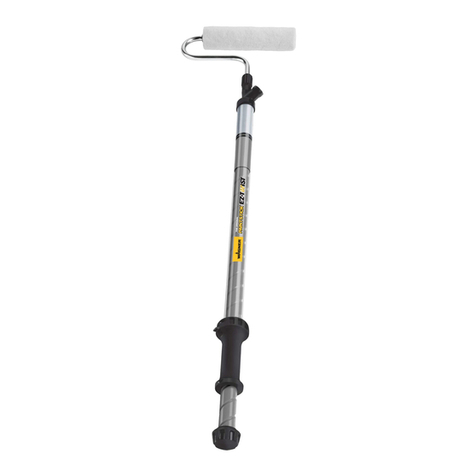
Homeright
Homeright PaintStick instruction sheet

Scheppach
Scheppach 7906100723 instruction manual
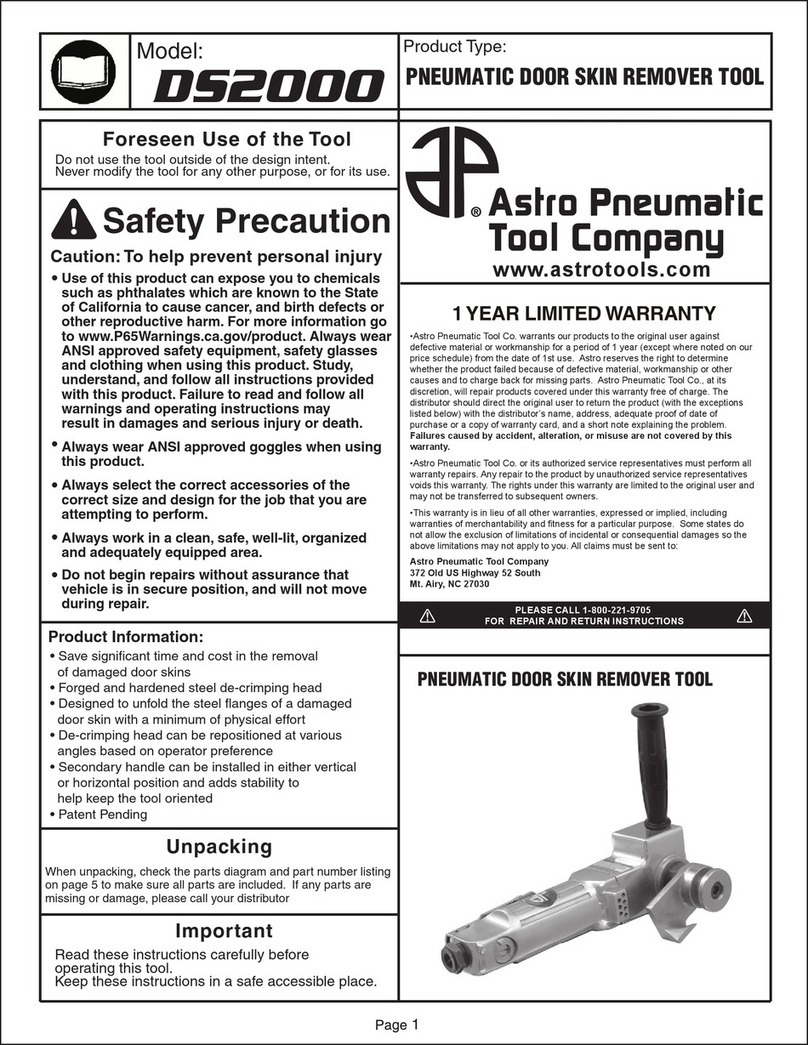
Astro Pneumatic Tool
Astro Pneumatic Tool DS2000 manual
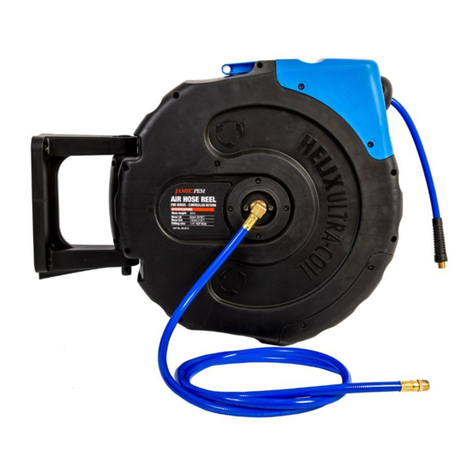
JAMEC PEM
JAMEC PEM PRO Series operating instructions
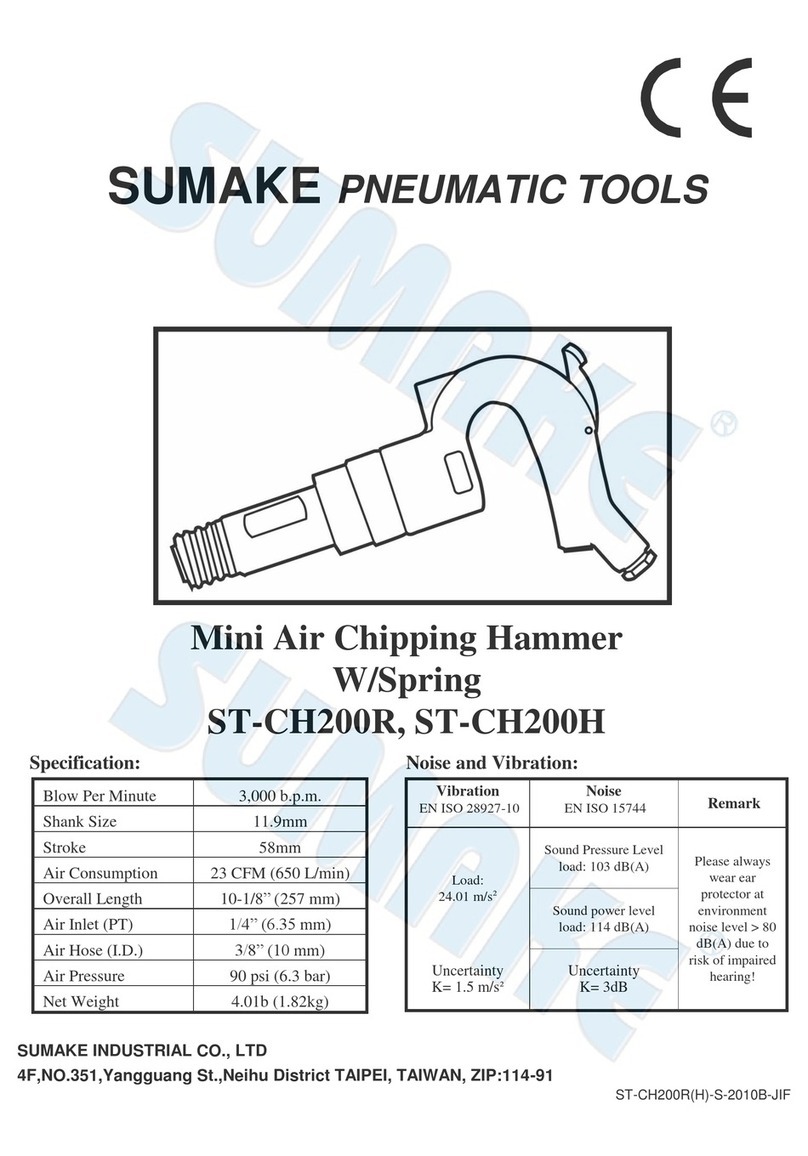
Sumake
Sumake ST-CH200R Original instructions

Otto Ganter
Otto Ganter GN 20 Operating instruction

Grizzly
Grizzly T10432 owner's manual

Novatek
Novatek 139.2107 Operation and maintenance manual
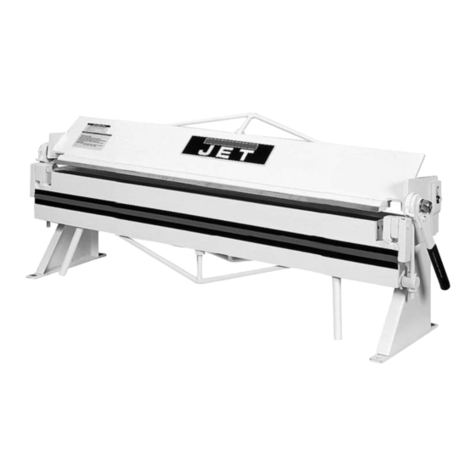
Jet
Jet HB-1648H owner's manual
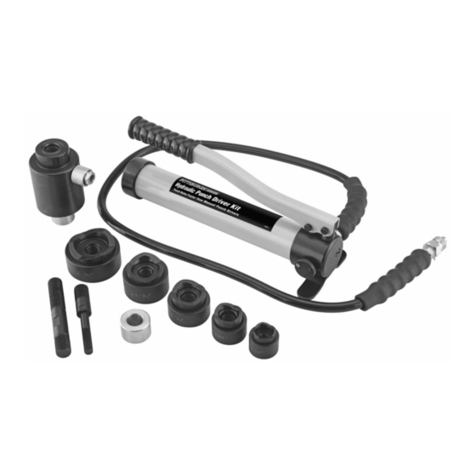
Harbor Freight Tools
Harbor Freight Tools PITTSBURGH AUTOMOTIVE 56411 Owner's manual & safety instructions
